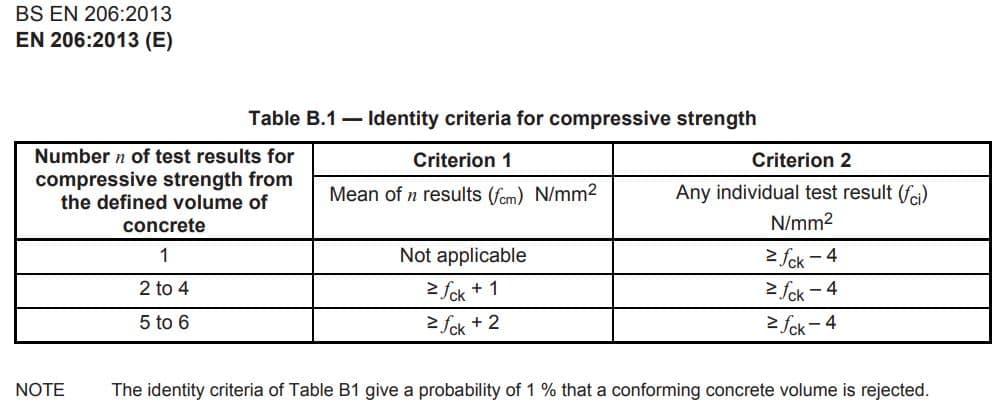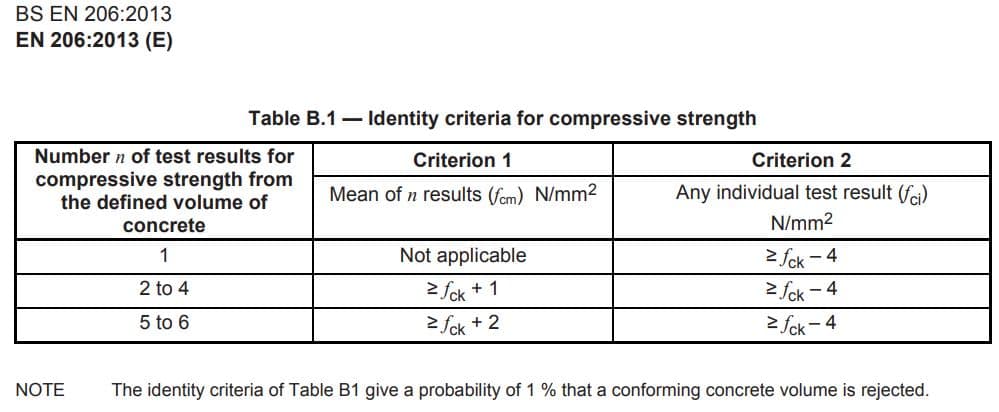Concrete compressive strength and concrete testing are important information for construction. Compressive strength is first checked through mix planning to ensure that the concrete quality intended for the building design is achieved. The development of concrete strength is checked by concrete cube or cylinder tests.
In other words, we test the concrete to see if it has the resistance capacity characteristic of the concrete adopted in the project.
Test results can be used to verify compliance with relevant standards. In this article we discuss the methods provided for in BS 5328 and BS EN 206-1. The following areas are covered in this article.
- Sampling Rates for Concrete
- Method for pouring concrete cubes/cylinders
- Testing concrete cubes and cylinders
- BS 5328 compliance criteria
- BS EN 206-1 compliance criteria
Concrete Sampling Rate
The frequency of sampling depends on the amount of concrete to be poured into a specific concrete. For smaller quantities of concrete, the sampling rate is higher than for large volumes of concrete.
The following table from BS 5328: Part 1 gives the rates to be considered when sampling concrete.


Normally the volume of concrete depends on the type of elements to be concreted. Therefore, the above method can be used for all types of elements.
There are two types of casting testing .
- Sample with two cubes/cylinders
- Sample with three cubes/cylinder.
Both processes are widely used in construction. However, the two-cube method is typically used for large construction projects.
Method for casting cubes/cylinders
Let's look at the dimension of concrete test cubes and cylinders
- Cube – 150mm x 150mm x 150mm
- Cylinder – 150mm in diameter and 300mm in height
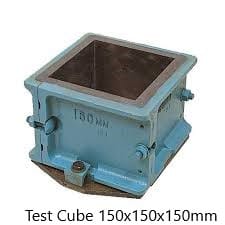
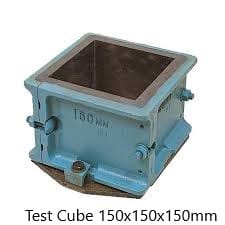
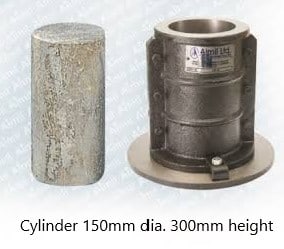
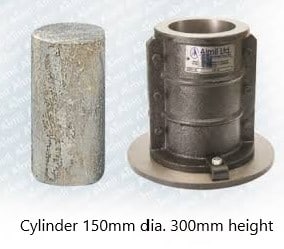
The following procedure can be used to shape the test samples
- Collect random samples. Collection could be done based on the results of the slump test and based on the random method. For example, if the sampling rate is 20 m 3 and each rail supports 5 m 3 , there are four tracks. The sound engineer can randomly select samples from these four tracks if they are in perfect condition.
- Pour concrete into the cubes in 3 layers.
- Each layer must be compacted with 35 blows.
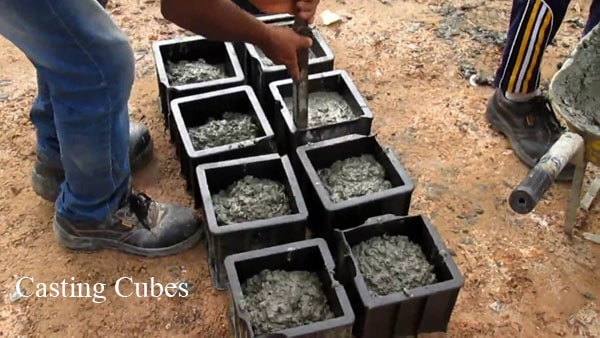
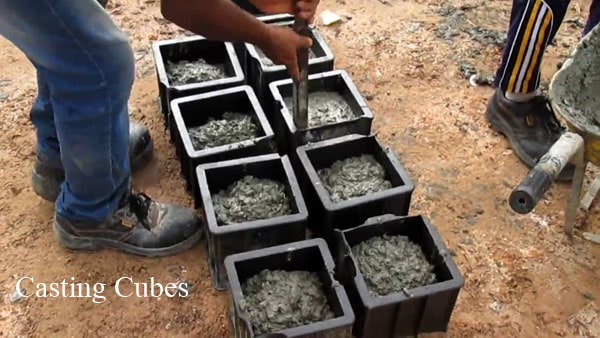
- After compaction, treat the upper surface with a trowel.
- After 24 hours, the sample is removed from the mold very carefully, without damaging it.
- The required identification number or designation must be affixed to the matrix for reference.
- Samples must be immersed in clean water until collected for testing. This is the standard curing method when testing concrete.
- Depending on the number of samples molded for a sample, testing can be performed after 7 days or 28 days.
- For fast-setting concrete, where early strength development is required, tests may be carried out sooner than 7 days, depending on the design.
- Furthermore, there are concretes with low increase in strength that are tested after 28 and 56 days. These tests are carried out in accordance with the respective project specifications.
Influence of water curing time on the compressive strength of concrete
There is a significant influence water hardening and curing time to achieve concrete strength. Additionally, curing affects the durability of the concrete .
The effect of wet curing can be expressed as follows.
- If the concrete dries immediately, it will only reach 40% of its strength
- Three days of healing only increases resistance by 60%
- 7-day cure increases resistance to 75%
- 28 days of water curing increases strength by 95%.
These facts show the importance of keeping the concrete moist to achieve the necessary strength.
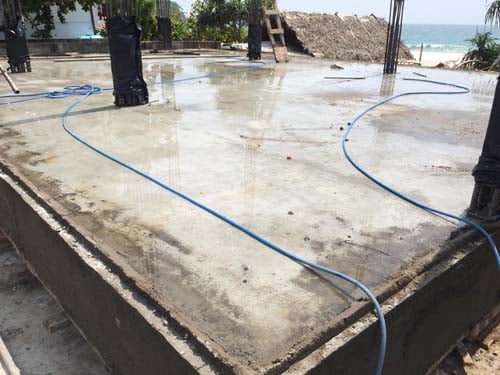
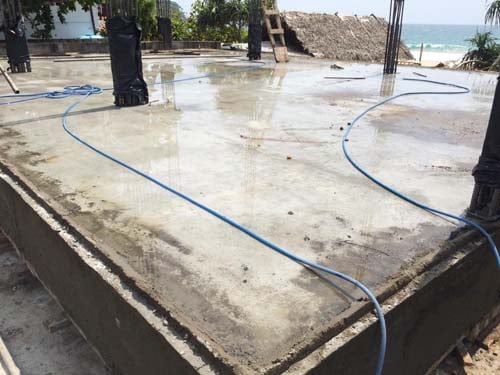
Most importantly, the test cubes are kept under water until they are tested. This allows them to harden as much as possible. However, during construction, concrete generally does not harden within the time specified above. Therefore, the expected strength under real conditions cannot be achieved in 28 days.
Furthermore, there are certain risks if the test cubes only slightly reach the required strength, as they may not have developed at the construction site due to lack of curing. Therefore, due care should be taken when checking the test cube results .
Concrete testing – cubes and cylinders
As explained above, the time frame for testing varies from project to project, although they are generally tested within 7 and 28 days. Concrete tests are carried out to ensure that the assumed characteristic strength is achieved during construction.
What is compressive strength?
The strength of concrete under compressive load. Pressure in the form of tension is measured to determine the compressive stress that the concrete can withstand.
Why is compressive strength important?
Compressive strength is the parameter that represents concrete in structural design. There are two main materials included in the mix, namely concrete and steel. Therefore, it is extremely important for the designer to know the compressive strength.
Factors Affecting the Compressive Strength of Concrete
There are many factors that affect the strength of concrete. Seven of them are listed below.
- Quality of materials such as cement, coarse aggregate, fine aggregate and water
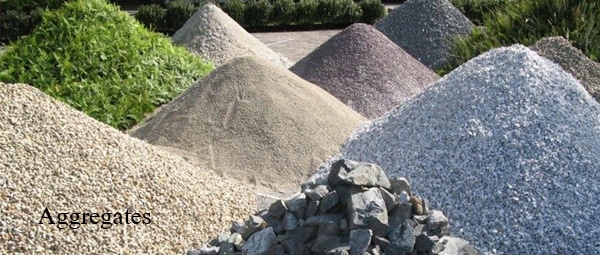
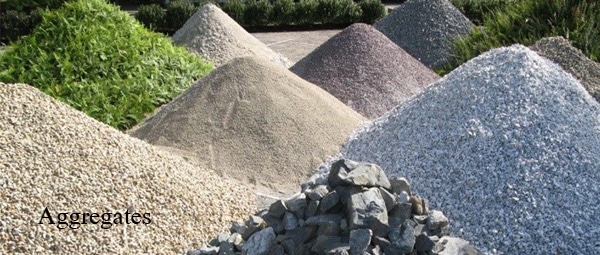
- Water-cement ratio
- Air trapping
- Aggregate suggestion (coarse: fine)
- The ratio of aggregate to cement
- Use of additives
- Healing time
- Time after concreting
Test Method for Compressive Strength
- Make sure the test cube or cylinder is dry
- Measure the sample weight
- Place the sample on the machine support plates as shown in the following figure
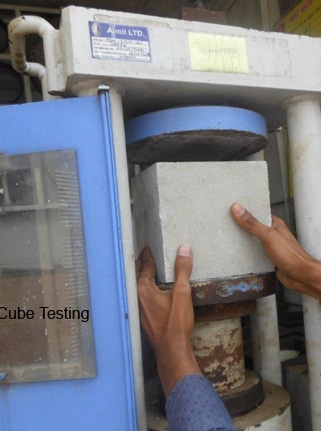
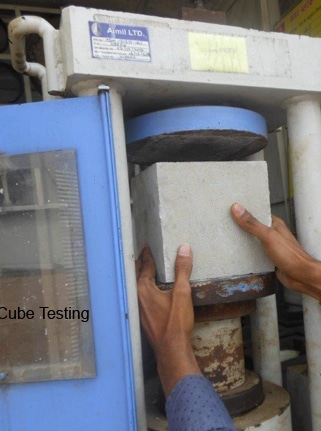
- Properly align the plate with the load axis. Maintain an accuracy of ±1% of the sample size between the sample center axis and the bottom plate.
- Gradually increase the load until failure. The charging rate is 0.6 ± 0.2 N/mm 2 /S
- Record the maximum force of the machine
The same procedure is also followed while testing concrete cylinders.
Compressive strength can be calculated using the following equation
Compressive Strength = Maximum Applied Load / Top Surface of the Sample
Error method
The failure method of the hub or cylinder is taken into account when determining results. If the cube or cylinder does not fail satisfactorily, the sample will not be considered.
To identify satisfactory/unsatisfactory failure modes, the following criteria given in BS EN 12309-3 can be used.
Satisfactory rupture of concrete
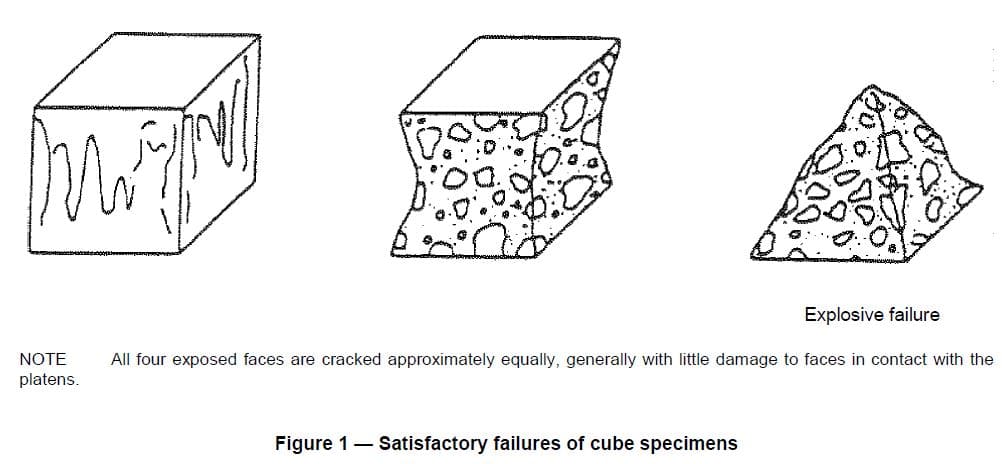
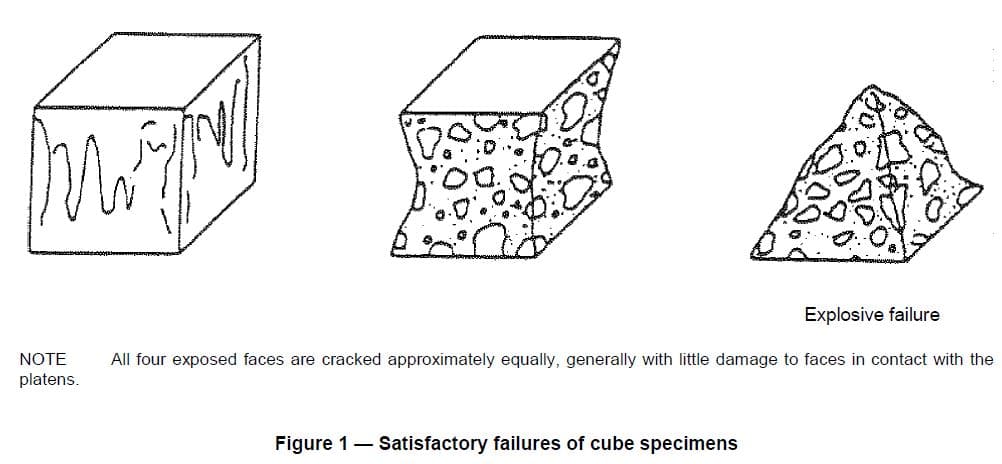
Unsatisfactory failure of cube samples
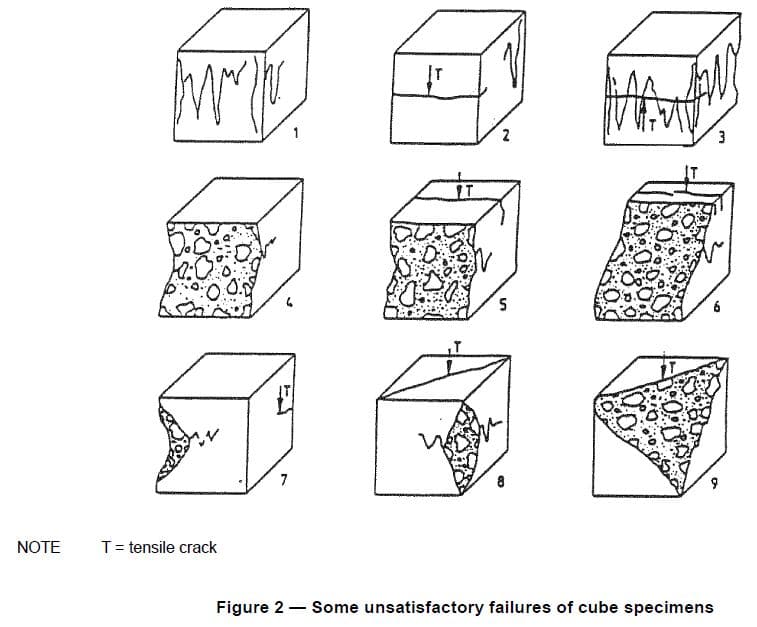
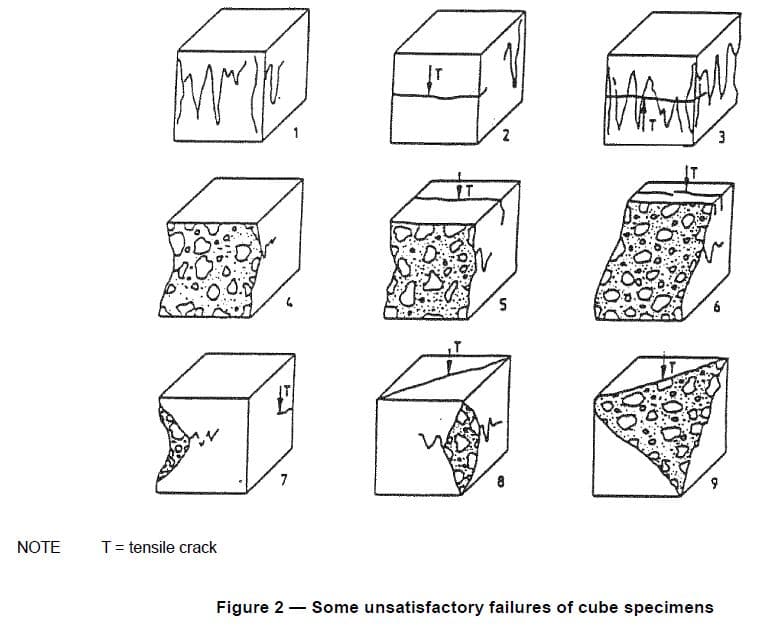
Satisfactory Failures of Cylinder Samples
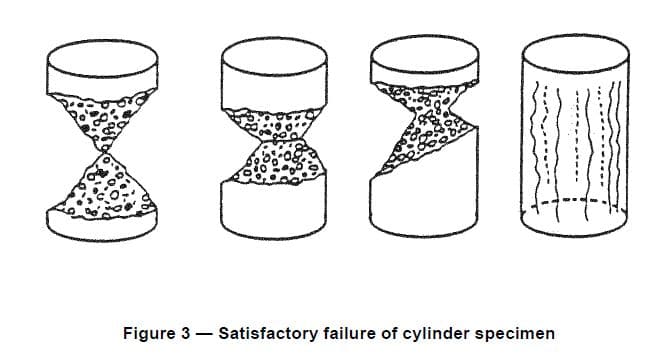
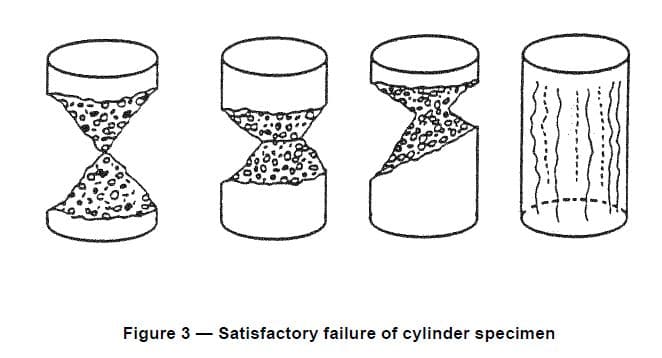
Unsatisfactory failure of cylinder samples
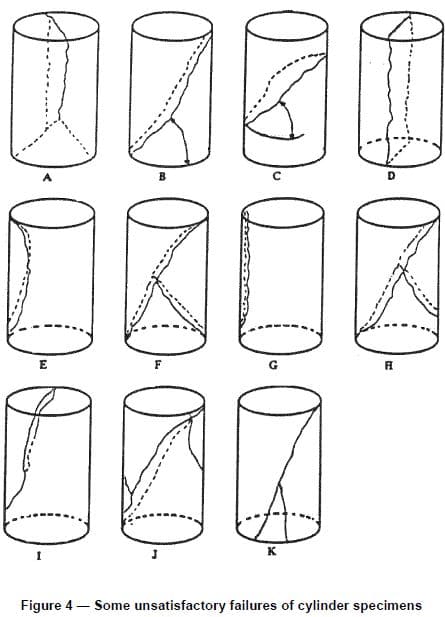
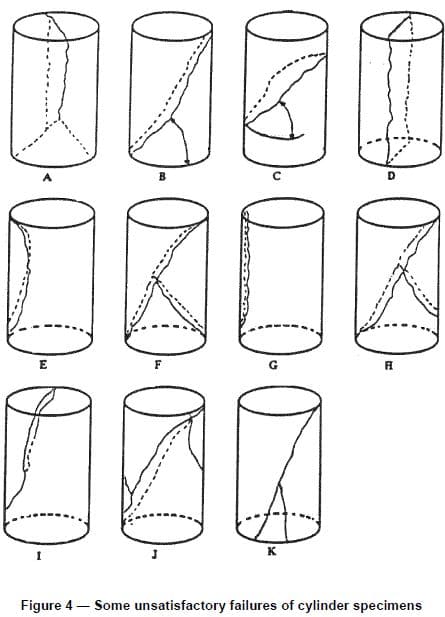
It is very important to examine the failure method after testing before worrying about the strength of the sample as a result.
BS 5328 Part 4 compliance criteria for compressive strength
The following information is tabulated as specified in BS 5328 Part 4.
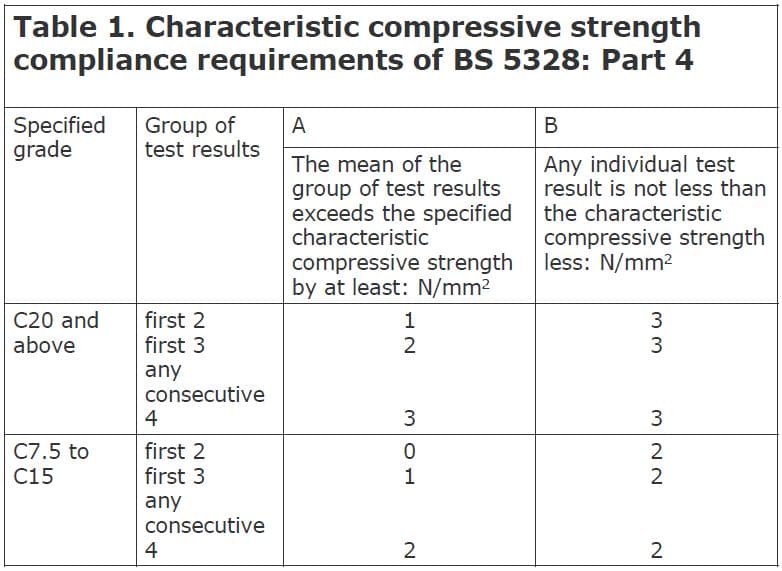
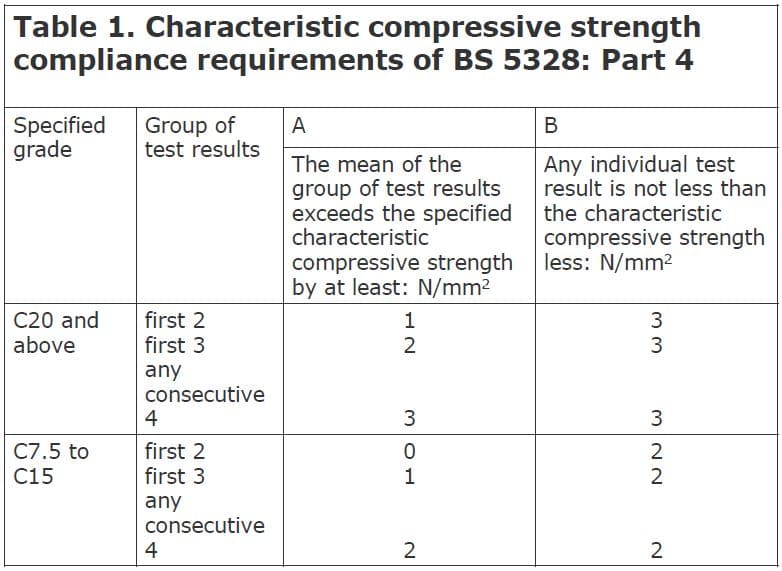
The above compliance criteria can be explained as follows.
Consider the cube thickness f cu is as C35 and there are three consecutive test results.
Criterion B
F cui ≥f cu -3
Example;
F cui ≥ 35-3 = 32 N/mm 2
Criterion A for 3 consecutive test results
F Sperm3 ≥ f cu +2
Example;
F Sperm3 ≥ 35 + 2 = 37 N/mm 2
Conformity criteria according to BS EN 206-1:2000
The following compliance criteria are specified.
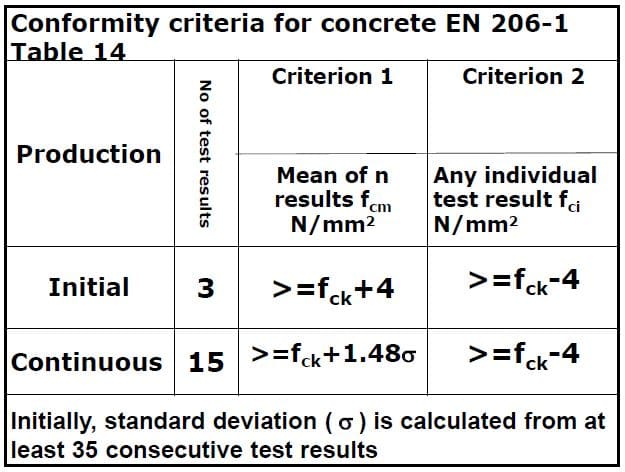
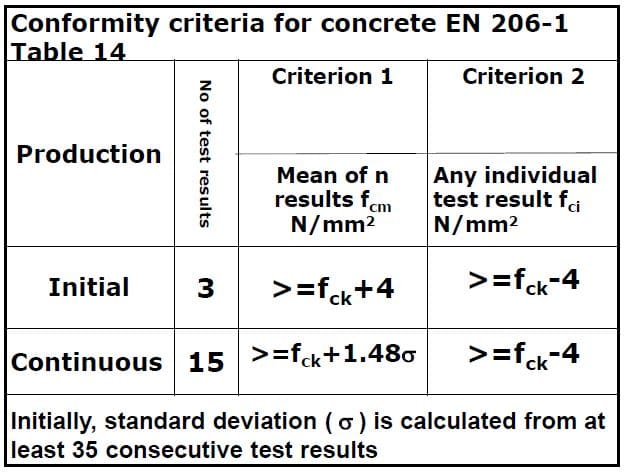
The above criteria can be explained as follows.
Initial production
Concrete is considered C28/35
Individual criteria
F ci ≥f ck -4
Example
F ci ≥ 35 – 4 = 31 N/mm 2
Average of 3 consecutive test results
F cm3 ≥ f ck +4
Example
F cm3 ≥ 35 + 4 = 39 N/mm 2
BS EN 206:2013 compliance criteria
The following guidelines are provided as compliance criteria.
